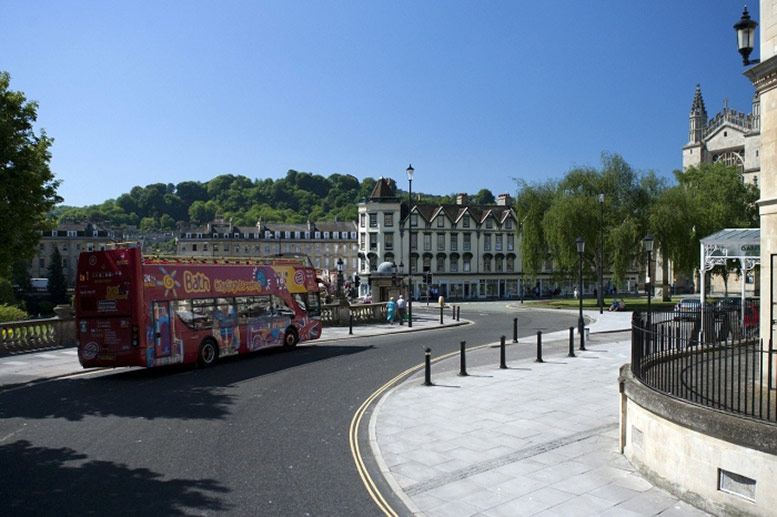Are Tour Buses Safe?
When it comes to travel, opting for a tour bus can often be an excellent choice, whether you're looking to visit specific landmarks, explore expansive destinations like London, or simply transport a large group efficiently.

However, the safety of tour buses is frequently called into question, particularly in light of alarming incidents. For instance, a tragic rollover accident involving a tour bus travelling from Las Vegas to the Grand Canyon resulted in one fatality and 42 injuries, as noted in this report about tour bus accidents. The investigation suggested that excessive speed may have been a significant factor in this accident, which left the operating company under scrutiny.
So, how can you determine whether a tour bus is safe for your journey? While they aren't categorically unsafe, there are several considerations to keep in mind. According to the U.S. Department of Transportation, charter buses are approximately 50 times safer than travelling by car and twice as safe as flying. However, when accidents do occur, the sheer size and weight of buses can lead to severe consequences.
Choosing a Reliable Bus Company
Before booking a tour or charter bus, start by researching the company on the USDOT website. This will give you access to the Federal Motor Carrier Safety Administration's database, which contains essential safety information, statistics, and the accident history of the company’s vehicles and drivers.
Utilize this data to select the safest bus company. It's crucial to ensure that the bus is registered with the U.S. Department of Transportation and to check when it last underwent maintenance. Steer clear of companies with a history of recent accidents.
If the bus company’s name doesn’t appear in the database, don’t hesitate to contact them directly to inquire if they partner with a charter company. You should then be able to locate the charter company in the FMCSA database.
Utilizing the SaferBus App
Another useful tool is the SaferBus app, developed by the FMCSA, which is free to use. This app allows you to check the status of bus companies registered with the Department of Transportation, and it also provides a platform for filing complaints against bus companies if needed.
Exploring London Tour Buses
London is famous for its iconic double-decker tour buses, which offer a unique way to explore the city’s landmarks, including the Tower of London, Buckingham Palace, and the Houses of Parliament. Many of these buses provide hop-on, hop-off services, allowing tourists to explore at their own pace. However, while they can enhance the sightseeing experience, it's essential to be aware of their safety records.
Recent years have seen accidents involving double-decker buses, often due to collisions or excessive speed, particularly in busy urban environments. Travellers should exercise caution and remain vigilant when using these services.
Concerns Regarding Double-Decker Buses
While double-decker buses are a popular choice in many major cities, they can pose additional risks. In recent years, New York City has seen several accidents involving double-decker buses, often due to collisions with trucks or other buses, or due to excessive speed.
The Role of Driver Error
One of the most common causes of serious bus accidents is driver error. Even if a bus company has a good safety record, driver behaviour can be unpredictable. Factors like fatigue or substance use can lead to catastrophic results. A notable incident occurred on Mother’s Day in 1999 when 22 passengers lost their lives in a crash in New Orleans. Investigators found that the driver's marijuana use shortly before the accident significantly contributed to the tragedy; he had failed to disclose his drug history to his employer.
When boarding a bus, pay close attention to the driver’s behaviour. If something feels off or if you feel unsafe, it’s best to trust your instincts and reconsider riding that bus.
Travelling by Bus Abroad
If you're planning to travel by tour bus internationally, you won’t have access to the federal safety database, so what should you do instead? It’s advisable to ask any questions you might have to a tour operator or travel agent. Before booking anything, seek recommendations and gather as much information as possible.
You can also use sites like Trip Advisor to read about other travellers’ experiences with specific tour bus companies. Additionally, avoiding nighttime travel and overnight buses can be an important safety consideration when travelling internationally.
Overall, taking a tour bus or charter bus is not inherently unsafe, but conducting thorough research on the company and, when possible, the driver beforehand is crucial. Always ask for recommendations and utilize federal government resources before making any bookings.
Comparing UK and US Tour Buses: Key Differences in Safety and Experience
When it comes to touring by bus, both the UK and the US offer unique experiences, but there are notable differences in terms of safety standards, vehicle types, and overall travel culture. In the UK, iconic double-decker buses are a staple of city tours, particularly in London, offering an immersive view of the city’s landmarks. However, due to their size, these buses can present additional risks, especially in urban environments with tight streets.
In contrast, US tour buses, particularly charter buses, tend to be larger, single-deck vehicles used for long-distance travel and sightseeing. While both countries maintain stringent safety regulations, the UK’s older road systems and iconic vehicle designs create different challenges compared to the wide highways and modern buses more common in the US. Understanding these distinctions can help travellers choose the safest and most enjoyable tour experience.












